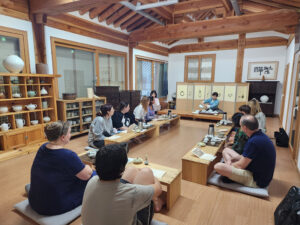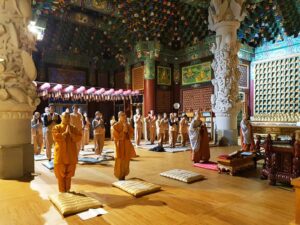In today’s fast-moving world, it’s rare to find places where time slows down. But in South Korea, such places exist. Buddhist temples welcome visitors who are searching for peace, meaning, and a deeper connection with themselves. A templestay is not just a stay, it’s a spiritual journey into Korean tradition.
What Is a Templestay?
A templestay is a special program that allows visitors to experience daily life in a Korean Buddhist temple. You don’t need to follow Buddhism or speak Korean to join. Everyone is welcome.
During the stay, you take part in activities like meditation, early morning chanting, silent walking, tea ceremonies, and cultural workshops such as lantern making or calligraphy. These moments are peaceful and meaningful. You’ll be surrounded by calm nature — forests, mountains, or quiet gardens — depending on the temple.
Why Try a Templestay?
A templestay is a different way to travel. Instead of rushing from place to place, you slow down. You connect with nature, reflect on yourself, and learn about Korea’s living spiritual traditions.
Temples are not just old buildings, they are active places where monks live and practice. When you join them, you discover a deeper side of Korea that many tourists never see. You also get a break from screens, noise, and stress.
📍 Where Can You Try It?
More than 130 temples across Korea offer templestay programs. Here are some of the most iconic:
- Beopjusa (Chungcheongbuk-do): Set in Songnisan National Park, known for its giant golden Buddha.
- Haeinsa (UNESCO-listed): Home to the Tripitaka Koreana, a national treasure carved into thousands of wooden blocks.
- Golgulsa (near Gyeongju): The only temple in Korea where you can practice Sunmudo, a Zen martial art.
- Baekyangsa: Famous for its temple food programs, showcasing traditional Korean vegetarian cuisine.
What Does a Day in a Temple Look Like?
A typical day in a temple follows a simple, peaceful rhythm.
It begins early, usually around 4:30 a.m., with morning chanting in the main prayer hall. The sound of bells and drums fills the quiet air. After that, there’s a short meditation session to help you focus and find inner calm.
At 6:30 a.m., breakfast is served. Meals are vegetarian and shared in silence, following traditional customs. Later in the morning, you take a walking meditation in the forest. Each step is slow and mindful.
Before lunch, there’s usually a cultural activity. You might make a lotus lantern, try Buddhist calligraphy, or join a tea ceremony with a monk.
After a simple lunch, you have free time to relax, read, or talk quietly with other visitors or monks. In the evening, another meditation session helps you end the day with calm and reflection. Lights go out early.
Experiencing a templestay means discovering Korea beyond the skyscrapers and bustling markets. It’s stepping into a world where time flows differently, where each breath becomes sacred, and where we learn to simply be.
At eTourism Korea, we believe these are the moments that truly shape a journey. A templestay isn’t just a box to tick on your itinerary, it’s a memory you carry deep within you.



